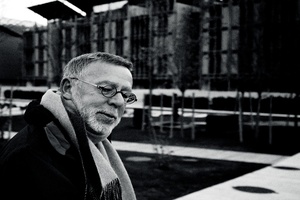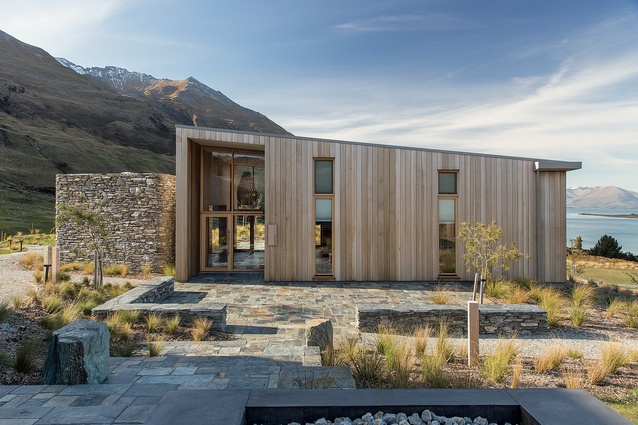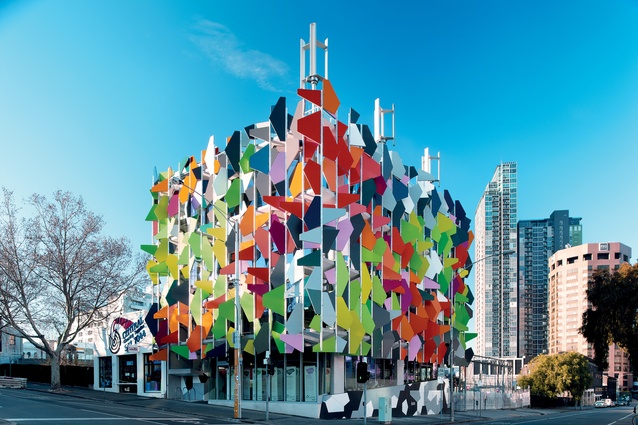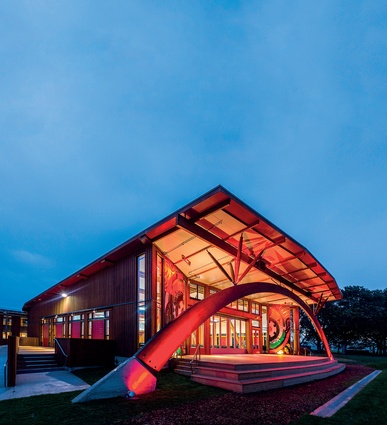Thinking outside the grid
The US systems practice specialist, Bill Reed AIA, LEED, Hon. FIGP, conducted a series of workshops in New Zealand on regenerative and integrated design – a holistic approach to building.
Regeneration is both a practice philosophy and a process. Success in regeneration means to evolve and continually develop new potential. Its dictionary definition addresses both the action and the source of this new potential to create anew and to be born of a new spirit.

In practical terms, regeneration means to contribute to the value-generating processes of the living systems of which we are part. Without adding value – with a conscious awareness of the ongoing, co-creative and emergent processes of life – life shifts to a degenerating state. The imperative in any design process is to intentionally develop the understanding required to participate in improving the resiliency of living relationships such as ecosystems, human social systems, businesses, families, and so on. Without a process of continually adding value to living systems, sustainability is not possible.
In order to understand regeneration in the context of the sustainability movement, it is necessary to understand that the practice of targeting of conservation, zero, or neutral conditions – while worthy and necessary aims – will not address what is required for a sustainable condition (even if it is possible to reach this level of perfection). Zero damage is not the same as understanding how we interact with the complexities of life and how to avoid the inevitable, unintended consequences of our actions. Nor does zero damage address how to continually participate in the dance of evolution – the entry-level condition to join the game of life.
There are a few reasons behind why we approach sustainability from this zero-based perspective: these aims are seen primarily from a technical perspective; we perceive life as a mechanical process of interactive components rather than understanding that living wholes are greater than the sum of their parts; humans are seen as the doers, not participants; and the environment is seen as something other than us.
There is a distinction between environmental and ecological thinking. By definition, an environment is the context within which something exists. Environment contains an “us” and a “not us” in its meaning. Ecology, by contrast, sees all aspects as part of a working dynamic whole – it’s all us.
There is a need to fill a significant gap in our culture’s work toward achieving a sustainable condition. The gap: the development of a state of consciousness that has the ability to hold life, all life, as a living entity that works as a whole, integrated and evolving living system. The whole, from a living-systems perspective, includes everything, every process and every dimension of consciousness and existence – whether we can perceive these things or not.
It is difficult for a reductionist culture to understand that working with the complexity of a living system is possible in the first place and second, how it can be addressed without reducing it to manageable parts. This is where working with pattern understanding comes into play. For practitioners familiar with working with patterns, it is actually easier to assess living patterns and reach definitive conclusions from these distinct patterns than it is to try to make sense of thousands of pieces.
We are quite good at this when it comes to assessing a whole person: we intuitively know that we will not be able to understand the distinct nature (or essence) of a friend if there are only a few organs and bones available for inspection. Even if all his or her component parts were available, all the genetic sequencing, etc., it is obvious that the nature of the person can only be described mechanically, if at all.
Yet, with observation, we are able to describe the uniqueness of individuals. We do this by looking at the patterns of how they, as a whole entity, are in relation to other entities – friends, colleagues, family members, their community, a dog in the street, and so on. It is how they are in relationship – what value they add to the relationship, the role they serve and provide – that begins to triangulate “who” they are, not just “what” they are.
Often, practitioners mistake the “flows” of a system as the indicator of relationship. Flows of water, energy, habitat and sun are certainly important, yet, continuing to use human relationships as an analogue, we would not describe our relationship to a friend only in terms of flows. The aspects of relationship are energetic, often invisible and full of extremely complex and nuanced exchanges.
A living system – or place, or watershed, or community – is a “being” or “organism.” It is necessary to be in relationship with it; if we are not, then abuse, neglect, or misunderstood interventions are the result. This nature of relationship is the big leap for the design and building industry. The land is not simply dirt that we build upon. Various aboriginal peoples had this understanding; everything in space and time, including the consciousness of “who” they were, was inextricably part of the whole.
The Navajo term for mountain refers to a whole set of relationships and the ongoing movement inherent in those relationships. These relationships include the life cycles of the animals and plants which grow at different elevations, the weather patterns affected by the mountain, as well as the human experience of being with the mountain. All of these processes form the dynamic interrelationship and kinetic processes that regenerate and transform life. Since this notion of the mountain is not separate from the entire cosmic process, one can only really come to know the mountain by learning about the kinetic dynamics of the whole.
All this is not to say that working in pieces and parts with quantitative measurement is wrong. It is just the wrong place to start. As Wendell Berry observes, “A good solution is good because it is in harmony with those larger patterns, solves more than one problem, and doesn’t create new ones.” He goes on to explain that health is to be valued above any cure, and coherence of pattern above almost any solution produced piecemeal or in isolation. Adopting one or two green or regenerative technologies into a green building practice without understanding the underlying principles that make the approach wholly regenerative is not as effective and, at worst, produces unintended counterproductive consequences.
Western and Eastern medicine practices may be a useful comparison. Neither is right nor wrong in itself. Green design, as it is practiced in a mechanical manner, can be compared to working on the heart or intestinal system as a specialist might – curing the particular issue but not addressing the overall systemic nature of the cause, whether it is diet, environment, stress, or genetics.
Integrative design, an organised process to find synergies among building and living systems, has an analogy in integrative medicine – many specialists getting together to diagnose and address relatively complex cause and effects. Regeneration might be compared to naturopathic and Eastern medicine – cranial sacral therapy, acupuncture, and so on – these practices start with the energetic patterns of the whole body. In practice, all these mores should come into play.
Yet, it is always better to start with the nature of the larger environmental influences and interrelationships before solving for the symptom and cutting the body open.
From the perspective of architecture and planning, our responsibility is not to design “things” but to positively support human and natural processes in order to achieve long-term quality of life – that is, evolution with the necessary corollary of positive potential for all life.
• This means that the act of creating a building is not a conclusion but a beginning and catalyst for positive change.
• This sets the building within and connects it to a larger system and is concerned with an overall systems approach to design.
• This considers “place” – an expression of integrated ecologies of climate, resources, and culture – critical to the shaping of building, human and natural development.
There are current designs and policy practices that approach this nature of inter-relationship with the places we inhabit. Ecosystems have been seen to recover their health and demonstrate even greater levels of potential than imagined – deserts being turned into food-producing gardens with minimal water use; water being brought back to the desert by appropriate planting and techniques of slowing down water flows; damaged, low-diversity and desertified ecosystems brought back into full flower along with increased animal and plant habitat by replicating preindustrial animal habitat patterns; urban areas brought back to civility and high quality of life through paying attention to the nature of human and natural patterns in each unique place.
Examples include Jane Jacobs’ work in New York City neighborhoods as noted in The Death and Life of Great American Cities, in which she uses the term regeneration for her work. Alan Savory’s work in creating new health in damaged ecosystems is another example. Regenesis in Santa Fe, New Mexico, looks at the socioecological whole and unites these “sectors” as a whole system of healthy evolution.
There are many positive stories, evidenced around the world, about regenerative design. We have frequently seen the first glimmer of new health and wholeness in nature and human habitat appear within a span of 18 months – the qualifier is if we understand that every place (neighbourhood, city, region) has a pattern of life and that these places are both unique and nested within each other; that the smallest unit of place-sourced design is the watershed (water activates soil health and therefore life); that humans are nature and not separate from it; and that becoming conscious of the need to be in caring relationship with all life is the foundation of a positive and thriving coexistence – and thus moves us into the realm of true coevolution.












